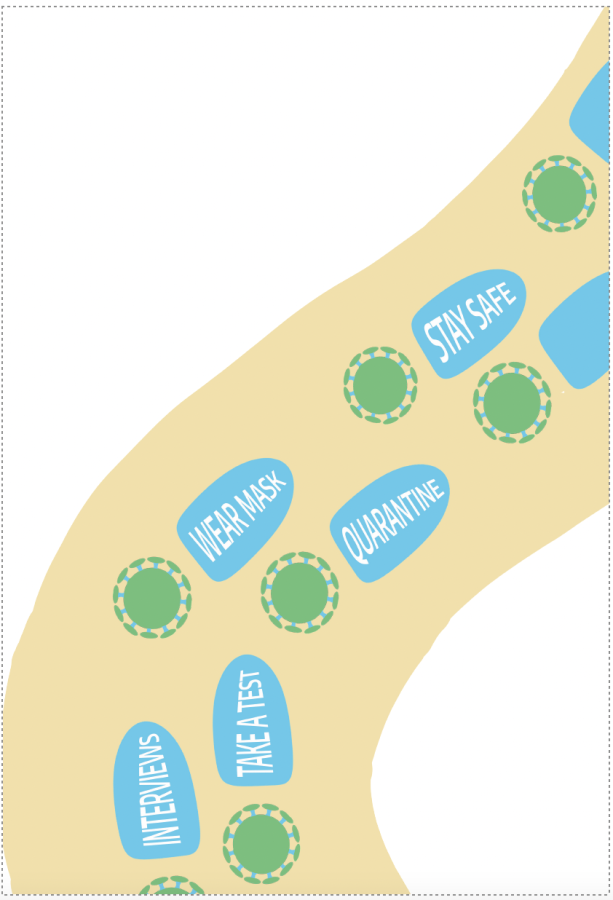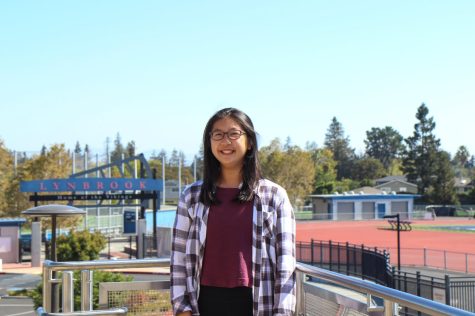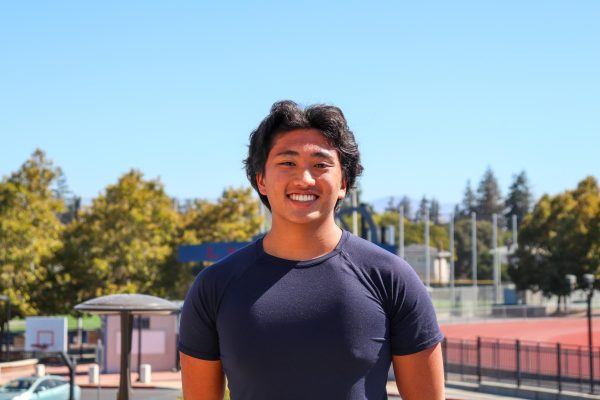COVID-19 contract tracing keeps students and staff safe
Graphic illustration by Tanika Anbuchelvan
These are some of the steps that Lynbrook takes to prevent the spread of COVID-19.
October 6, 2021
On the first day of school, Lynbrook confirmed its first positive case of COVID-19. Since then, the school has reported four additional cases, including both students and staff. Despite COVID-19 outbreaks at schools across the country, there has not been one at Lynbrook or at any FUHSD school, which is in part due to Lynbrook’s rigorous contact tracing, mask-wearing and vaccination policies.
In contrast, other states like Florida and Texas have taken a much more relaxed approach to controlling the spread. Both states implemented mask mandate bans, which have led to clashes between school districts and their state governments. They also both have opposed public health measures that are designed to protect students and staff, which has greatly contributed to the climbing case numbers in Florida and Texas. Less than two months into the school year, the number of reported COVID-19 cases among students in Texas has surpassed the total number of cases reported in the entirety of the 2020-21 school year. However, state data is incomplete and is likely an undercount. The student case numbers in Florida follow a similar trend, with the state recording 31,752 new pediatric cases in the week of Aug. 16.
Schools in the district follow guidelines from the Centers for Disease Control and Prevention, the California Department of Public Health and the Santa Clara Department of Public Health to determine how to operate safely. All three agencies state that in-person instruction is safe for students and staff when proper safety guidelines are followed. Wearing masks indoors, regardless of vaccination status, is required by Santa Clara County. Additionally, all three agencies stress that getting vaccinated is still the most effective approach to staying safe.
In addition to these rules, FUHSD also developed its own guidelines for handling COVID-19 cases. During the second week of school, FUHSD guidelines were updated to require masking for outdoor activities, which differs from the guidelines of the CDC, CDPH and SCCPH. There are definite concerns from many parents around safety protocols, but the vast majority of parents are thankful that their children are back in school and learning.
“We had a safety protocol process, but we had to scale it up really quickly,” said FUHSD COVID-19 designee and Associate Superintendent Trudy Gross. Her task involves making sure that FUHSD is adhering to county, state and federal guidelines to keep students safe.
Since Aug. 23, FUHSD has followed the Aug. 12 CDPH public health order, requiring that all school staff show either proof of vaccination or test weekly. The CDPH has given school districts in Calif. two months to comply with the order, the final deadline being Oct. 15.
With a single COVID-19 case often infecting several other people, another important safety measure is contact tracing, by which administrators identify individuals who were in close contact with the positively-tested individual and issue COVID-19 testing and quarantine requirements as necessary. Assistant Principal and COVID-19 Designee Susan Rocha spearheads Lynbrook’s contact tracing program. When students experience COVID-19 symptoms, they call the office, and their information is conveyed to Rocha, who follows up with the student in order to determine the next steps.
Students or staff who test positive for COVID-19 usually call-in to the COVID-19 Designee — Rocha in this case. After a student calls in, contact tracing involves interviewing the positive-tested student on their whereabouts up to 48 hours prior, as COVID-19 is contagious as early as 48 hours before the test results come back. This includes the student recalling everyone they interacted with in class and during lunch, clubs, extracurricular activities and sports. Close contact lists are now established: Students or staff who have been within six feet of the affected student for a total of 15 minutes within two days before the case confirmation is considered a close contact. Most of the time, the close contact is confined to close interactions, but if there was too much movement in a particular class, the whole class may be considered a close contact. Families are considered close contacts as well.
Once the close contact list is established, different emails are sent to close contacts depending on vaccination status. Being a close contact does not directly translate to quarantine; most of the time, limited quarantine time or COVID-19 tests are enough. Each close contact receives individual instruction to ensure that they have not contracted COVID-19.
Administrators recommend that close contacts test immediately if the student is symptomatic. Asymptomatic students do not need to test immediately, but are required to test six days after exposure. If the student tests negative for COVID-19, they can return to school immediately; if the student tests positive, Rocha then pinpoints their close contacts by conducting interviews, either by in-person or virtual means, with the positive student and their contacts before moving to the next step: administering COVID-19 tests and potential quarantine days based on a series of conditions.
If the close contact is vaccinated and asymptomatic, they may remain on campus; however testing is recommended immediately as well as five days after the exposure.
If the close contact is vaccinated but symptomatic, they are required to isolate and take a COVID-19 test immediately. If the test is positive, a quarantine of 10 or more days is imposed. For negative tests, the individual may return to campus 24 hours after being fever-free and demonstrating evidence of improved symptoms.
For close contacts who are unvaccinated and asymptomatic, procedures are different between students and staff. If the close contact is a student, it is determined through interviews if they and the COVID-positive student were both wearing masks. If they were both masked, the close contact student may remain on campus after getting tested, but a modified quarantine — in which the student may go to class, but is prohibited from participating in other extracurricular activities — is implemented.
If both students were unmasked during the exposure, the basic 10-day quarantine procedure is implemented only if they are untested. If the student decides to test, it may shorten or prolong quarantine depending on the result. Additionally, the home quarantine may be shortened to seven days if a test taken on or after the fifth day of the last exposure is negative. For school staff, the procedures are the same as for students, except that masks do not determine the outcome of their decision.
If the close contact is unvaccinated and symptomatic, the only procedure is to isolate for 10 or more days after the appearance of symptoms and for 24 hours after symptoms improve. The quarantine can be shortened to seven days if a second COVID-19 test taken on day 5 of the quarantine comes back negative.
Despite taking all COVID precautions and getting vaccinated, junior Jeffery Kao tested positive in early September.
“I was quarantined for 10 days,” Kao said. “The only requirement was that in quarantine, I wasn’t required to test during or before returning to school.”
Kao’s parents first notified the school two days before he officially tested positive. He was questioned by Rocha to determine close contacts, then went into isolation. Kao falls into the vaccinated and symptomatic category, but since he contracted COVID-19 outside of school, he was not required to test at all. Instead, he was only required to quarantine for 10 days, and he was able to return to class a week-and-a-half later.
All positive cases and close contacts who tested positive or have felt symptoms have been relatively proactive in adhering to COVID guidelines and rules.
“I think that the Lynbrook community is doing a fantastic job of really following the guidelines,” Rocha said.
Beyond following strict guidelines, the minimal issues with COVID-19 at Lynbrook may be attributed to the high vaccination rate in Santa Clara County. In the county, 88.1% of residents above the age of 12 have received their first dose, and 82.9% of all residents are fully vaccinated. Additionally, in August 2021, the district sent out an Informed K-12 form for voluntary vaccination status submission of students. Although it does not paint a complete picture of the student population, it still displays valuable information to the community.
“63% of students in the district have told us they are vaccinated,” Gross said. “I know that it’s higher than that, as not everybody has filled out the Informed K-12 form.”
The high vaccination rate is also reflected in the county’s positive case numbers. Besides the recent spike in August 2021 due to the delta variant, the county has seen pediatric and adult cases of COVID-19 stagnate in recent months. Currently, its 7-day average is 249 cases, substantially lower than the average of 1,242 in January 2021.
The weekly cases in the district follow a similar trend to the overall case rates in the county. In the week of Aug. 16, the district recorded two staff cases and five student cases for a total of seven positives. That number peaked in the following week with one additional case, before falling to four in the week of Aug. 30. In the week of Sept. 20, FUHSD reported five cases across all schools.
With high vaccination rates and an exhuastive contact tracing system, FUHSD has been able to maintain low case counts and keep students in school.
“By and large, people are happy with the procedures and want their kids at school, but my experience when I’ve talked to students is, they’re happy to be back at school,” Gross said.





























































